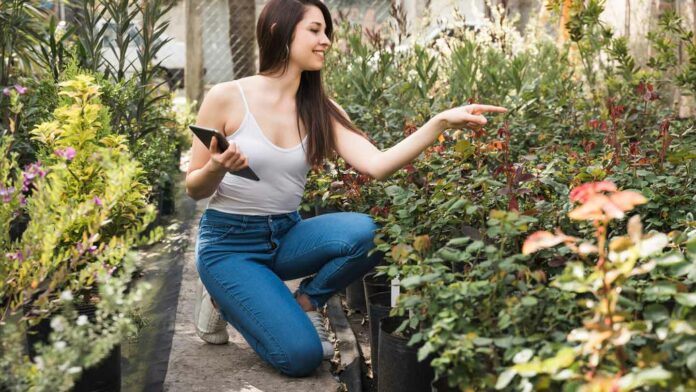Pollinators are the unsung heroes of a thriving vegetable garden, actively contributing to bountiful harvests. Dynamic pollination processes, orchestrated by bees, butterflies, and hummingbirds, result in increased crop yields.
Their presence guarantees a flourishing vegetable garden. They facilitate the essential transfer of pollen from male to female plant parts. The buzzing activity of these pollinators represents nature’s efficiency in action.
This guide unveils the secrets of cultivating a garden that beckons and sustains vital pollinators. So, let’s continue reading before you look for the answer: do cucumbers need pollinators?
The Role Of Pollinators In Vegetable Gardens
Pollinators, including honey bees, butterflies, and hummingbirds, go about as nature’s productive agents. They work with the transfer of pollen, a pivotal process for vegetable crops’ reproduction.
Dynamic pollination increments crop yields, guaranteeing a plentiful harvest. This dynamic commitment by pollinators ensures the realization of vegetables by permitting pollen transfer between plant parts.
The humming movement of honey bees guarantees the effective pollination of vegetable blossoms, making the establishment for hearty organic product advancement. Butterflies, with their sensitive rippling, add to the variety of pollination, assuming a part in the conceptive cycle.
Hummingbirds, attracted to lively blossoms, add one more layer to the complex dance of pollination in the vegetable nursery. Together, these pollinators bring energy and life, forming the efficiency of the nursery.
Criteria For Selecting Pollinator-Friendly Plants
Choosing the right plants includes understanding the nuanced inclinations of pollinators. Various bloom shapes, tones, and sizes draw in an assortment of pollinating animal categories.
Vital timing of blossoms guarantees a consistent stock of nectar and pollen all through the seasons. Similarity with vegetable crops cultivates a commonly useful connection among plants and pollinators.
Energetic blossoms, formed remarkably, attract pollinators, making a dynamic and exuberant nursery space. The opportune progression of blossoms ensures a consistent stock of assets for pollinators. Similarity with vegetables improves the general environment, advancing a flourishing conjunction.
Designing A Pollinator-Friendly Garden Layout
Making a nursery design that draws in pollinators includes vital position of plants. Guarantee variety in sprout times for all year fascination. Bunch plants of comparative tones together to grab pollinators’ eye.
Plan for a blend of levels and designs to oblige different species. Incorporate local plants, which have advanced with neighborhood pollinators. Coordinate fragrant spices and blossoms known for drawing in unambiguous pollinators.
Pick an assortment of blossom shapes to take special care of various bugs. Integrate water highlights like water basins for pollinators to hydrate. Plant in layers, from ground cover to taller vegetation.
Sustainable Gardening Practices For Pollinator Conservation
Embracing eco-accommodating cultivating rehearses assumes a crucial part in pollinator protection. Decide on regular options in contrast to substance pesticides for bug control. Carry out crop revolution to upset bug life cycles without synthetic substances.
Cultivate a diversity of plants to create a resilient ecosystem. Attract natural predators to control pest populations organically. Incorporate organic mulch to retain soil moisture and deter weeds.
Install insect hotels to provide shelter and nesting sites for pollinators. Embrace no-till gardening methods to preserve soil structure and biodiversity.
Use compost to enrich soil fertility without relying on synthetic fertilizers. Foster a self-sustaining garden ecosystem with mindful, pesticide-free practices.
Community Engagement And Pollinator Advocacy
Connecting with networks in pollinator backing enhances the effect of individual endeavors. Find out about do cucumber plants need to be pollinated and sort out nearby studios to instruct on pollinator-accommodating cultivating rehearses.
Team up with schools to coordinate pollinator training into educational programs. Share examples of overcoming adversity of pollinator gardens inside the local area. Lay out local area gardens committed to pollinator-accommodating practices.
Structure associations with neighborhood organizations to advance pollinator protection. Cultivate a feeling of shared liability regarding pollinator environments. Urge people group individuals to partake in resident science drives.
Conclusion
This guide demystifies the cooperative energy among pollinators and vegetable nurseries, encouraging perusers to execute these experiences. The consistent association between pollinators, dynamic blossoms, and nursery workers ensures a prospering vegetable nursery.
Raise your nursery by consolidating highlights that captivate pollinators, for example, water basins and settling boxes. Select buddy establishes that improve the two vegetables and pollinators.
It’ll lay out a commonly helpful relationship. Embrace the extraordinary force of pollinator-accommodating practices and witness the overflow they bring to your vegetable fix.
